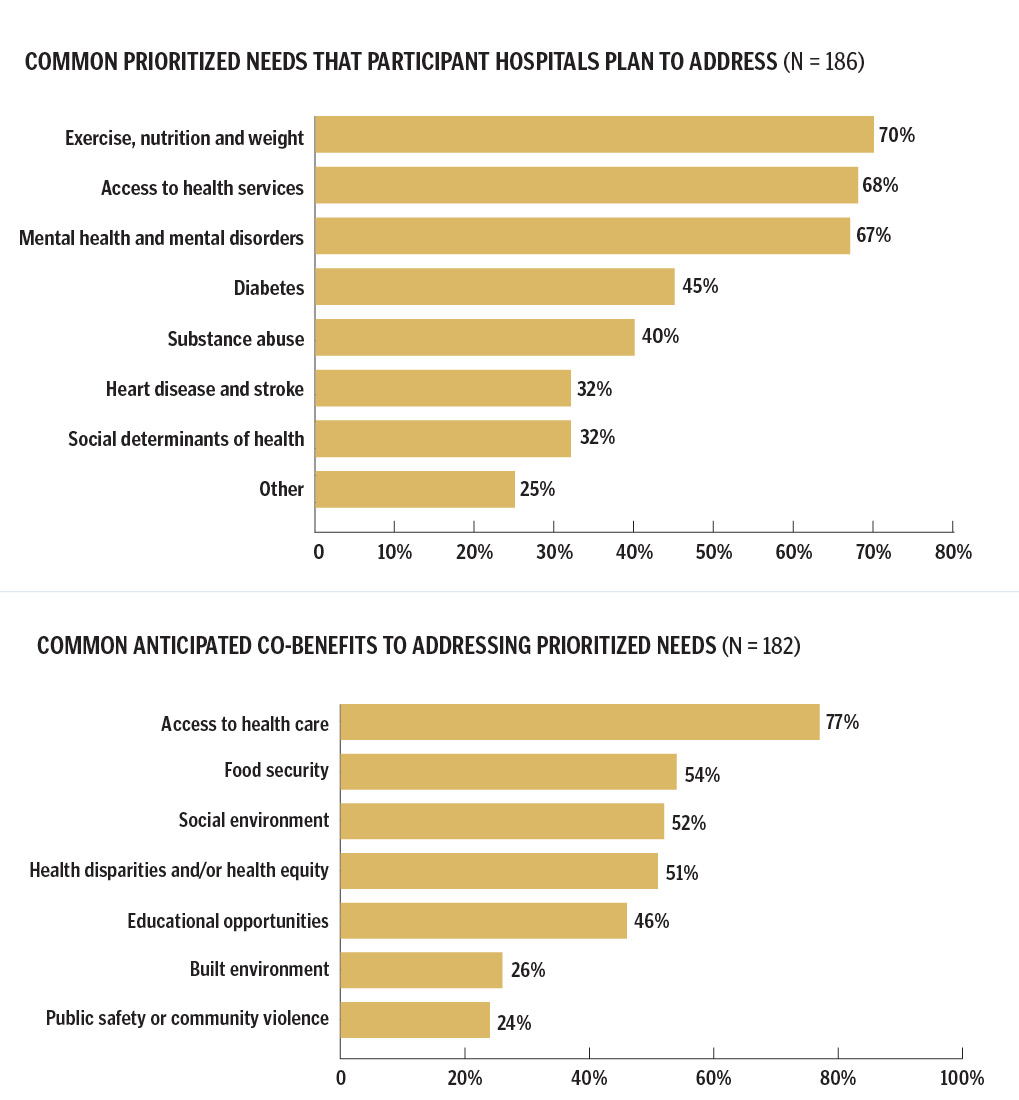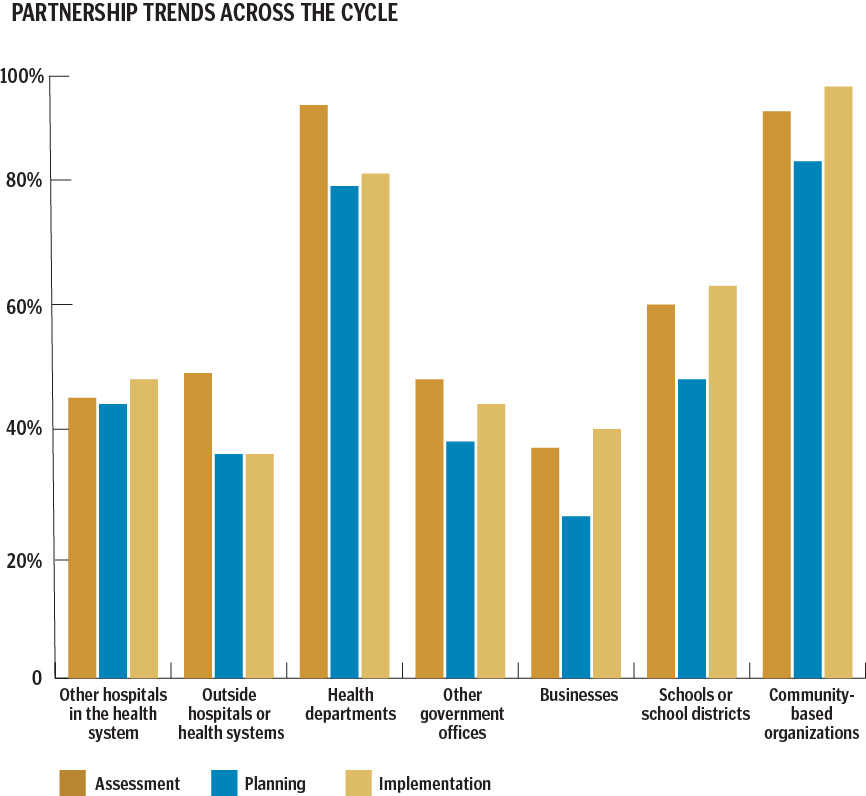BY: JULIE TROCCHIO, MS, and INDU SPUGNARDI
When the Catholic Health Association surveyed its members a few months ago about their current community health needs assessment cycle, we learned this: They are actively engaged with their communities, health departments and others to identify and address some of the most serious needs confronting their communities.
Working with Conduent (formerly the Healthy Communities Institute), CHA asked member hospitals about needs they are uncovering, whom they are working with as they assess needs and develop implementation strategies, and what factors were helpful or challenging in the process. Because the sample size was relatively small, we cannot generalize findings to all CHA members, but the results give us a picture of trends in our members' community health improvement work.
The most common needs CHA member hospitals said that they plan to address are: exercise, nutrition and weight; access to health services; mental health and mental disorders; diabetes; and substance abuse.
The survey also revealed there is a growing awareness of the importance of social factors in community health. About a third of CHA members responding to the survey told us they plan to directly address social determinants of health, including access to health care, food security, the social environment and health disparities and health equity. All respondents said they expected to impact at least one of these social determinants indirectly, as co-benefits of their implementation plans.
Members reported three general categories of intervention:
- At the policy, system and environment levels, such as addressing health care workforce shortages, the built environment, safety, economic development and housing
- Community-based, such as increasing awareness and outreach on health issues, behavior change and health education
- At the individual level, such as case management, clinical care and financial assistance
An interesting finding from the survey was that most CHA members are taking a multistrategy approach to the needs they were addressing and were using two or more of these intervention levels in their plans.
Several of the survey questions focused on hospital collaborations across the community health improvement cycle, and the responses show that partnerships are an outstanding characteristic of CHA members' community health improvement work. Members reported working with community partners during the assessment, planning and implementation stages. Almost all members named health departments as partners, but almost as frequently, they mentioned partnerships with community-based organizations.
About two-thirds of the hospitals responding said they worked with schools on their assessments and also as they implemented their plans. More than a third of respondents said they are working with community businesses.
Member hospitals reported that engagement with community members and external partnerships were a plus in their community health improvement work. They also cited community and public health resources as helpful, including with assistance in funding. Two-thirds reported that internal organizational buy-in was an asset in the CHNA process.
The most frequently reported challenges to CHNA work were the need for more staff time (69 percent), followed by insufficient financial resources (53 percent) to do the work.
About half of those responding told us that establishing an evaluation plan and setting benchmarks were challenging.
Evaluating the impact of joint projects was called out as a particular issue. Some respondents also reported the need for more timely and granular data (that is, information about more localized areas, such as by ZIP code, as opposed to state-, county- or city-wide information.
The survey shows CHA members are actively involved with their local health departments and other community partners in assessing and addressing community health needs. They are employing strategies that are multifaceted and target not only community health needs, but also the social factors that are behind these needs.
These are encouraging trends. As hospitals grow and deepen relationships with their community partners, community health improvement strategies should become more multisectoral and comprehensive. This can set the stage for efforts that effectively tackle the root causes of poor health and focus on keeping people healthy.


JULIE TROCCHIO, MS, is senior director, community benefit and continuing care, the Catholic Health Association, Washington, D.C.
INDU SPUGNARDI is director, advocacy and resource development, the Catholic Health Association, Washington, D.C.